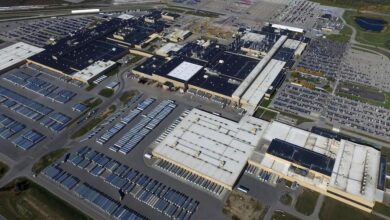High copper prices the new normal, likely to impact electric cars, expert warns By Investing.com

Investing.com – Following a surge in prices early in May, markets are now seeing a moderated correction. Amid speculation about future demand increases and supply issues, experts anticipate that elevated copper prices will become the norm in the long term, despite potential short-term fluctuations. Rodrigo Scolaro, an economist at Gep Costdrivers, shared this view in an interview with Investing.com Brazil.
In this context, the electric vehicle sector faces significant challenges due to rising costs of key metals like copper, as noted by the expert. Nickel and lithium prices may also rise, further impacting industry costs.
Factors contributing to the recent copper price hike include mining disruptions in Chile, Peru, Panama, and Zambia, which triggered the price surge. Political developments could sustain these elevated levels, particularly as China’s supply-demand balance is expected to remain in deficit in the coming years.
Check out the reasons in the full interview:
Investing.com – Copper, crucial for the electric vehicle sector, nears historic highs. What are the drivers behind this price appreciation?
Rodrigo Scolaro – When we talk about the copper market, we have two sides to look at: the actual production of ore and the production of refined copper, which would be the more finished product, which is the product that is actually traded on international exchanges.
For a few years now, we have been seeing some problems in mining. Copper mining is mainly in the Latin American market, the largest producers are Chile and Peru, but we also have production in several other countries. We saw a wave of political instability and environmental problems in Chile and Peru that harmed mining in these countries, which ended up reducing the supply of ore on the international market.
And, more recently, as the last straw, we had the closure of a very important mine in Panama, which was the largest copper mine in the country, which precisely affected the supply of international copper ore.
On the other hand, we have the issue of refining. China is the main refiner and, as there was less ore on the market, the ore was becoming more expensive, and this was putting pressure on the margins of Chinese refiners. They were earning less and less for refinement.
Discussions among Chinese companies have increased about a possible reduction in refining, perhaps a cut, greater control. And some Chinese data indicates that some type of cut has already started.
As the ore is in trouble, with the closure of the Panama mine and China discussing this refining issue, there was this uncertainty in the market that the supply of copper is not enough to meet the demand, all associated with this issue of transition to cars electricity and with the prospect that the demand for copper will grow very soon.
So, with this fear, prices started to rise. So we have some practical numbers, but it is also a very speculative movement. When we talk about refining demand, we saw some positive data from the Chinese economy, which is a major demander of refined copper. But nowadays, the main source of demand for refined copper is not electric cars yet. The perspective is that it will be a growing market and perhaps one of the main sources of demand. But today, it is the Chinese construction industry, and it is experiencing a lot of demand problems and has seen declines in the real estate sector.
The rise in copper is, therefore, still somewhat speculative, it is much more a prospect of an increase in demand than an actual increase in demand observed. Now in May it reached historic highs.
Inv.com – Do you expect this appreciation to continue? What factors might sustain or reduce this trend?
Scolaro – After this high peak in May, there was a drop in daily copper prices, a price correction, so to speak.
So, at that historic peak, because it is a speculative issue, it may be a little difficult to maintain. But this price drop is not that sharp.
It is very likely that, now in the short term, copper will continue to experience a decline, or at least a stabilization very soon at these levels, but it is unlikely that it will return to low parameters like at the beginning of 2024 and 2023. It is clear that We have different scenarios. China is very uncertain. Nothing indicates this, but if there is a very strong real estate crisis in China soon, as it is the main source of demand for copper, this could lead to a drop in prices, precisely with a very drastic reduction in demand.
So it is possible to have various scenarios, but what everything indicates is that there will be a supply problem, or at least a delay in this normalization of supply, and that demand will either stay as it is now or tend to increase.
For prices, considering the medium and long term, it is very likely that these historical parameters in price positions will be like a new normal.
Inv.com – Electric vehicles are particularly affected by these price increases. How do you assess the current supply-demand dynamics in this sector and the potential impact of significant copper price hikes?
Scolaro – There is definitely a direct connection. Currently, the construction sector is the main buyer of copper, but the electric vehicle market is a rapidly expanding market, and an electric vehicle requires a lot of copper. If we compare the amount of copper used in a normal combustion vehicle and the amount of copper used in an electric vehicle, the amount is much greater. We have even gained technology over the last few years, seeking to reduce this amount of copper. If we take the average kilogram of copper used in vehicles today with the electric vehicle from a few years ago, it is much smaller. We have this movement precisely because of copper prices. The industry seeks to use as little as possible. But it is still a metal, as far as our technology is concerned, fundamental for this sector.
With this transition, copper tends to continue to be increasingly necessary for this sector and this scenario that is emerging will have a direct impact. We have several uncertainties, most of them political. In the electric vehicle market, the sector stands on its own, but many countries require government incentives precisely to grow persistently. So it is a little difficult to predict, in many countries, how much this demand will grow and how quickly this transition will occur.
And we also have several other factors, such as international governments that are looking at these metals, not just copper, but lithium and other metals associated with electric vehicles, as an opportunity to have more cash on hand, so to speak. For example, in Mexico, there was recently the nationalization of lithium mines. Now they belong to the federal government. In Chile, there was a change in the mining constitution that increased state royalties on copper. These are also price factors, which can lead to increases.
The expectation for Chilean copper is that the increase in royalties will be passed on in some way. These are certainly factors that should impact the electric car market. The perspective is that there will be a gain in technology that will make vehicles cheaper, but the commodities themselves end up being very much in this situation of this political game.
The perspective is that this could impact costs, depending on the progress of opening new mines, refinement rates, but this will lead, in the long term, to perhaps a flattening of profit rates for electric vehicle manufacturers or these costs eventually being passed on to the consumer.
Inv.com – China expects electric vehicle costs to decrease this year, while the US plans increased tariffs on vehicles from China. Which markets could emerge as new opportunities? Is Brazil among them?
Scolaro – Electric cars are very dependent on these political issues, but not only them. For example, here in Brazil, over the last few years there has been a huge increase in green energy, mainly solar and wind, and it has had many incentives from the federal government.
There was this huge increase in import taxes on electric vehicles in the United States, precisely in this context of the electoral race that is now taking place between Biden and Trump. They both have industry-related protectionist measures, but they are protectionist measures at different levels. Trump made statements and the Republican Party’s history shows that it is much closer to the oil sector , which could impact some of the incentive measures for this transition in the United States and make the transition to electric vehicles in the United States slower. Many experts in that market mention that the electricity sector in the United States is already standing on its own two feet, that even without incentives it will not destroy the industry, but it could certainly be a difficulty in the transition.
And here in Brazil, there is more difficulty because we have many discussions in Congress about incentives for electrical energy, not only electric vehicles, but also others such as green hydrogen. However, it is a process that is too slow to really take off. It’s a little difficult to say exactly what the perspective is. The trend is for Brazil to have more and more electric vehicles, but we have many games of interest, such as, for example, ethanol . We see politicians saying that we shouldn’t invest so much in electric vehicles, that perhaps we should focus on ethanol. The tendency is for it to increase more and more, but it ends up being a question of games of interest, making it difficult to predict where the market will go and at what speed.
**
How to find the best stocks in the commodities sector? Find out with InvestingPro! With it, you have access to the best tools to invest safely, such as:
- ProPicks: Strategies that use AI to select explosive stocks.
- Fair Price: Know whether a stock is expensive or cheap based on its fundamentals.
- ProTips: Quick and direct tips to simplify financial information.
- Advanced Filter: Find the best stocks based on hundreds of metrics.
- Ideas: Discover how the biggest managers in the world are positioned and copy their strategies.
- Institutional-grade data: Build your own strategies with stocks from around the world.
- Turbo browsing: Investing.com pages load faster without ads.
Use the BEPRO coupon to get an additional discount on InvestingPro!



